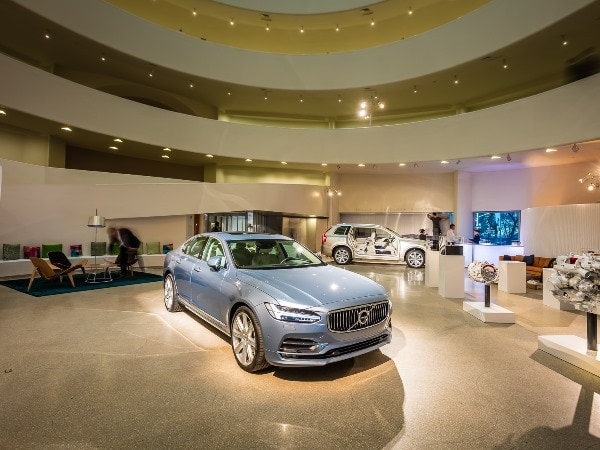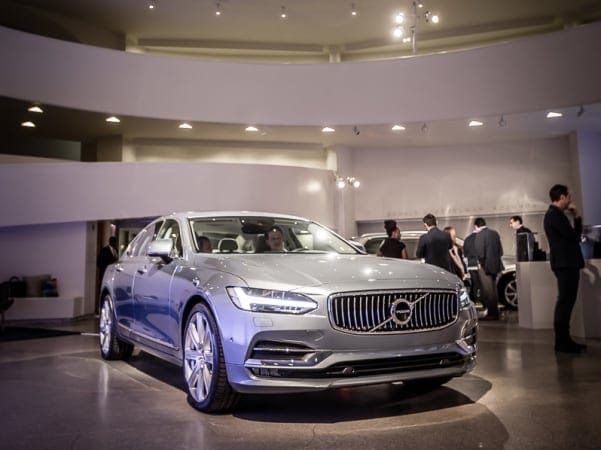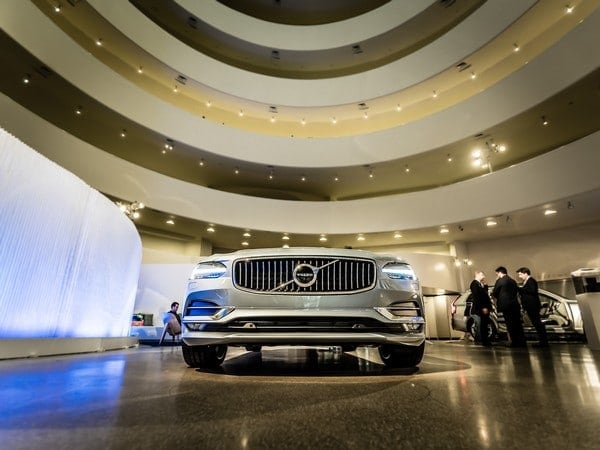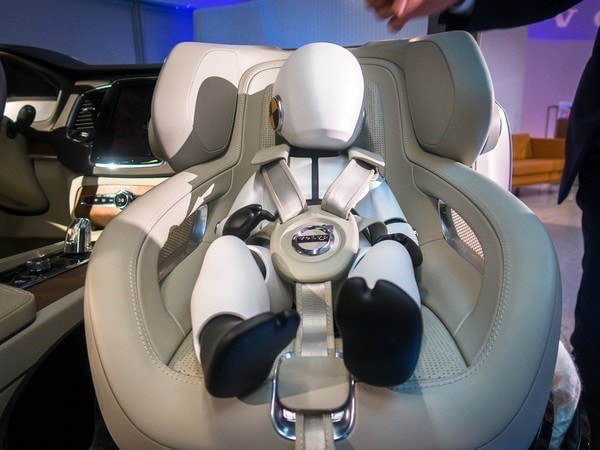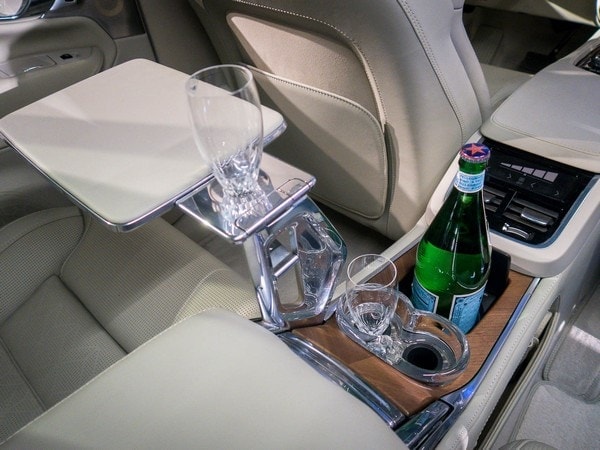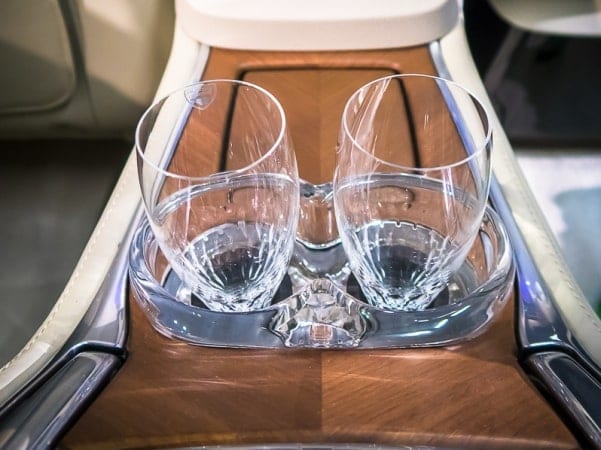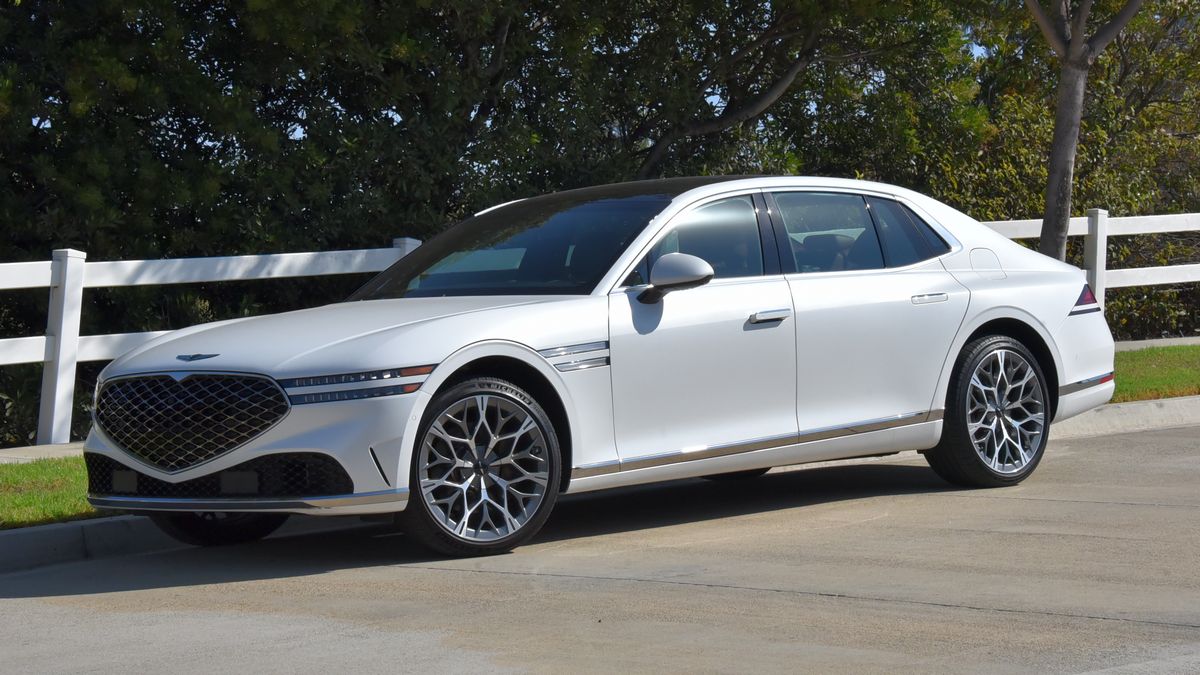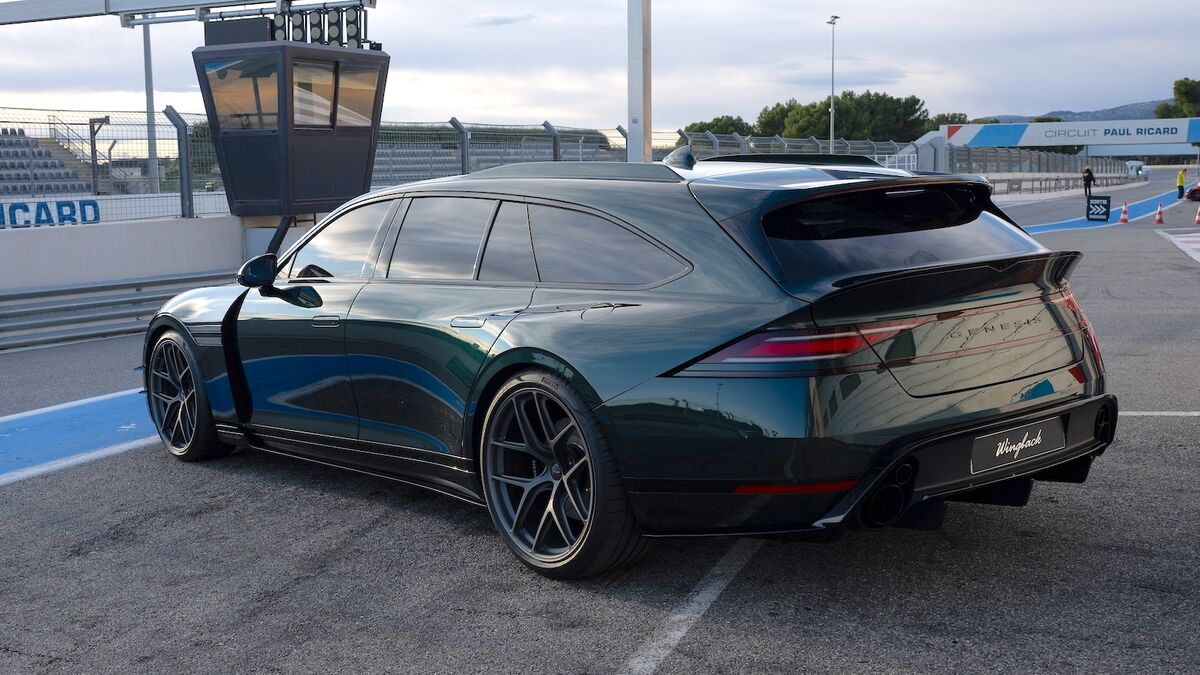There could be no doubting Volvo was in earnest; they’d requisitioned no less than Manhattan’s hallowed Fifth Avenue Guggenheim Museum to catch the eye. Rightly so. After a near brush with extinction a few years ago, two weeks before the New York Auto Show, they were saying it loud—we’re very much alive. And they brought stunning 2017 products to prove it.
On display in the Guggenheim were two extremely up-scale new offerings—an all-new luxury XC90 crossover and the all-new S90 luxury sedan. Both are constructed on Volvo’s SPA platform, for Scalable Product Architecture. The two have a number of themes in common, but the all-new S90 sedan seemed to indicate most clearly Volvo’s future direction.
Historically, Volvos have been inarguably “serious” devices, packaged in non-conformist Scandinavian shapes that set them apart. They bespoke functionality and sturdy individuality, usually at the expense of mainstream elegance, and for decades, Volvo enthusiasts prized that individualism. But these days, the contemporary European luxury segment has evolved to an all-out struggle for elegance and high-style panache. The recent extremely clean Audi A7 is a perfect example. The indisputably elegant 2017 S90 we saw in the Guggenheim is fully equipped to take Volvo into the center of that present-day style war.
New approach to luxury
The S90 is a major departure for Volvo. Its proportions and stance, poised on a long wheelbase, with extremely short overhangs at either end, denote a no-nonsense sport-sedan spirit. Though powered by a compact, transverse-mounted and supercharged 2.0-liter 4-cylinder engine, to deliver expected Swedish efficiency, the S90’s lengthy distance from the front axle to the dashboard lends it signature luxury-sedan packaging. (Earlier Volvos have always shoved the dashboard grumpily farther forward.) Similarly, the S90 has a wide track, further confirming its athletic appearance. The car will be available in front-wheel and all-wheel drive, features a double-wishbone front suspension for minimized understeer. Volvo claims it will be a “driver’s car.” This remains to be seen, but sounds promising.
The S90’s nose features a handsome scalloped grille—with the inevitable Volvo slash. This grille recalls the handsome P1800 sport coupe grille from the Sixties, surely one of the most elegant cars in Volvo’s long past. And the S90 headlights take full advantage of current fashion, using a distinctive graphic projection shape that will be instantly recognizable on the road—a hammer-shaped light pattern Volvo calls, “Thor’s Hammer.” You’ll know it when it strikes.
The body modeling is simple, strong, and muscular in the current mode. The S90’s low greenhouse is sculpted with a distinctive three-faceted curvature behind the rear door that the designers say will be a signature of future Volvo styling. BMW has successfully used a similar strategy with its own distinctive trailing-edge side window for decades.
Craftsmanship key
Interior styling in the S90 is certainly deluxe, in keeping with the car’s high-end mission—but the way it is deluxe is winsome and distinctive. The materials are of the highest quality, but the way they are combined with each other makes this point visually and spontaneously. Wood panels on the dashboard, for instance, are not merely inlaid—they stand out from there position before you, instantly persuading you that, yes, this is real wood. The large, flat expanse at the top of the dash presents the eye with custom-stitched leather, underlining the point that real craftsmanship was employed in the creation of this interior. The shapes of the dashboard and the entire interior are bold and confident throughout. And upon reaching for any of the knobs on the air vents or controls, your fingertips are met with what the Volvo stylists call “diamond-cut” surfaces. The surfaces are faceted and textured in a way that is pleasing to the touch.
The XC90 crossover was similarly impressive, though understandably, in a more utilitarian way. The example on display—featuring, of course, the same proud Thor’s Hammer headlights—demonstrated an interesting “Concept” where the standard right-front seat would normally be found. In its place was a unit with a rearward-facing child seat. The child seat itself was modular and portable, with a carrying handle. But the primary advantage is mounting the seat far enough forward so that the driver can easily make eye contact with the child while driving. This also allows the right-rear seat passenger to have eye contact and full access to the module. The child is thus not “banished” to a deserted rear seat, facing rearward all alone until the trip is complete. Just as important, this rear-facing front seating position does not have a backseat rear cushion nearby, limiting the child’s legroom in an impact. And the base underneath the removable child seat contains a good-sized compartment for storage of diapers.
The digital key
Volvo also demonstrated a digital-key app that can be used with their cars. They were quick to say they have nothing against normal keys or keyless-entry units; these will still be used. But a digital key activated via smartphone has numerous advantages. If you wish to loan your car to someone, you can simply transfer your digital key to that person’s phone and they have instant access. For safety, you can set a time limit on how long your digital key will remain in effect on the other party’s phone—they will be notified of when the usage period is to expire. A digital key could also be used for accessing rental cars or giving your dealer access to your car when it is at the dealership getting serviced. The car’s handshake with the digital key operates just as it would with conventional keyless entry.
And a Volvo spokesman pointed to one brilliant advantage of a digital key. If you’ve come to the end of your business day, and you accidentally left your phone at work, you can’t drive home until you go back for the phone. No lost phones—no worries.
